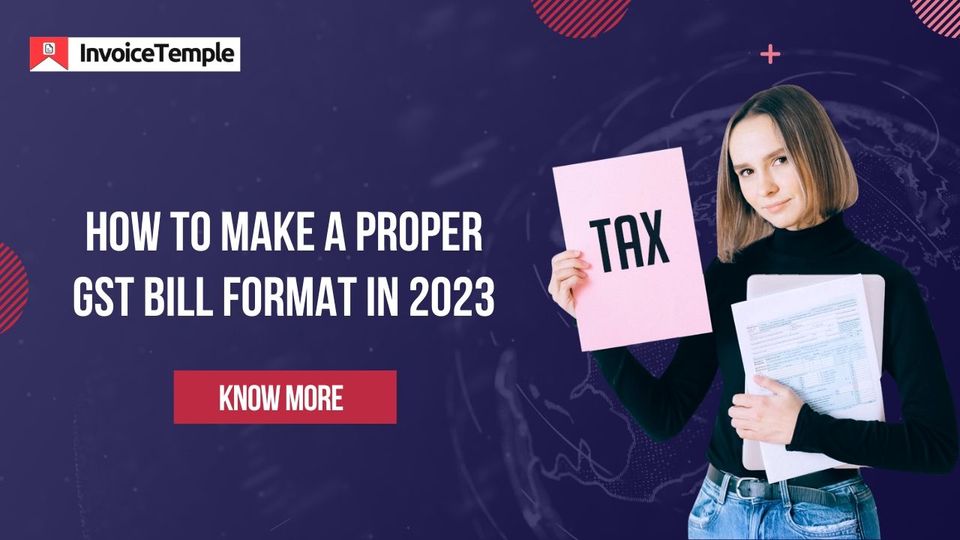How to Make a Proper GST Bill Format in 2023

What is GST Invoice?
A GST invoice is a document that records the details of goods or services provided by a supplier to a customer along with the GST (Goods and Services Tax) charged on the transaction.
In India, GST is a comprehensive tax levied on the supply of goods and services, and businesses registered under GST are required to issue a GST invoice for all sales made to their customers.
A GST invoice contains essential information such as the supplier's name and address, customer's name and address, GST identification numbers (GSTIN) of both the supplier and customer, invoice number and date, description and quantity of goods or services supplied, unit price, total price, and applicable GST rate and amount.
GST invoices are used to determine the amount of GST paid or collected by businesses and are necessary for claiming input tax credit (ITC) on GST paid on purchases.
Additionally, GST invoices are also used for compliance and audit purposes by tax authorities to verify the correctness of tax payments and transactions.
How to Create GST Bill Format
To create a GST bill format, follow these steps:
- Add your business name, address, and GSTIN at the top of the invoice.
- Include a unique invoice number and date of the invoice.
- Add the customer's name, address, and GSTIN (if applicable).
- Describe the goods or services provided along with their quantity, unit price, and total amount.
- Add the applicable GST rate and amount for each item or service.
- Show the total taxable value, GST amount, and the final invoice amount.
- Add any other charges or discounts, if applicable.
- Include payment terms such as the due date and payment methods.
- Add your contact details for any queries.
Make sure your GST bill format includes all the required information as per the GST regulations to avoid any compliance issues. Using GST invoicing software that offers customizable templates can help you create accurate and compliant invoices quickly and easily.
GST Bill Rules
The GST invoice rules are the guidelines issued by the Indian government under the GST (Goods and Services Tax) law, which mandate businesses to issue GST-compliant invoices. Here are the key GST invoice rules to follow:
- A GST invoice is required for every selling transaction of goods or services by a GST registered company.
- A GST invoice must include the following details:
- Name, address, and GSTIN of the supplier
- Name, address, and GSTIN of the recipient
- Unique invoice number and date of issue
- Description of goods or services provided
- Quantity and unit price of goods or services
- Total value of the goods or services
- GST rate and amount charged
- Place of supply (state code)
- HSN or SAC code for products or services.
3. The GST invoice must be issued on or before the time of delivery of goods or services or the receipt of payment, whichever is earlier.
4. In case of a supply of goods, the invoice must be signed by the supplier or his authorized representative.
5. In case of a supply of services, the invoice must be signed by the supplier or his authorized representative or sent through electronic means.
6. If the invoice value exceeds Rs. 50,000, a GST invoice must also include the recipient's signature or digital authentication.
7. A GST credit note or debit note must be issued in case of any modifications or cancellations made to the original GST invoice.
By following these GST invoice rules, businesses can ensure compliance with the GST law and avoid any penalties or fines. It is recommended that you use GST free invoicing software that has customized templates to make the process easier and more error-free.
Know more about the Essential Rules on GST Invoice
